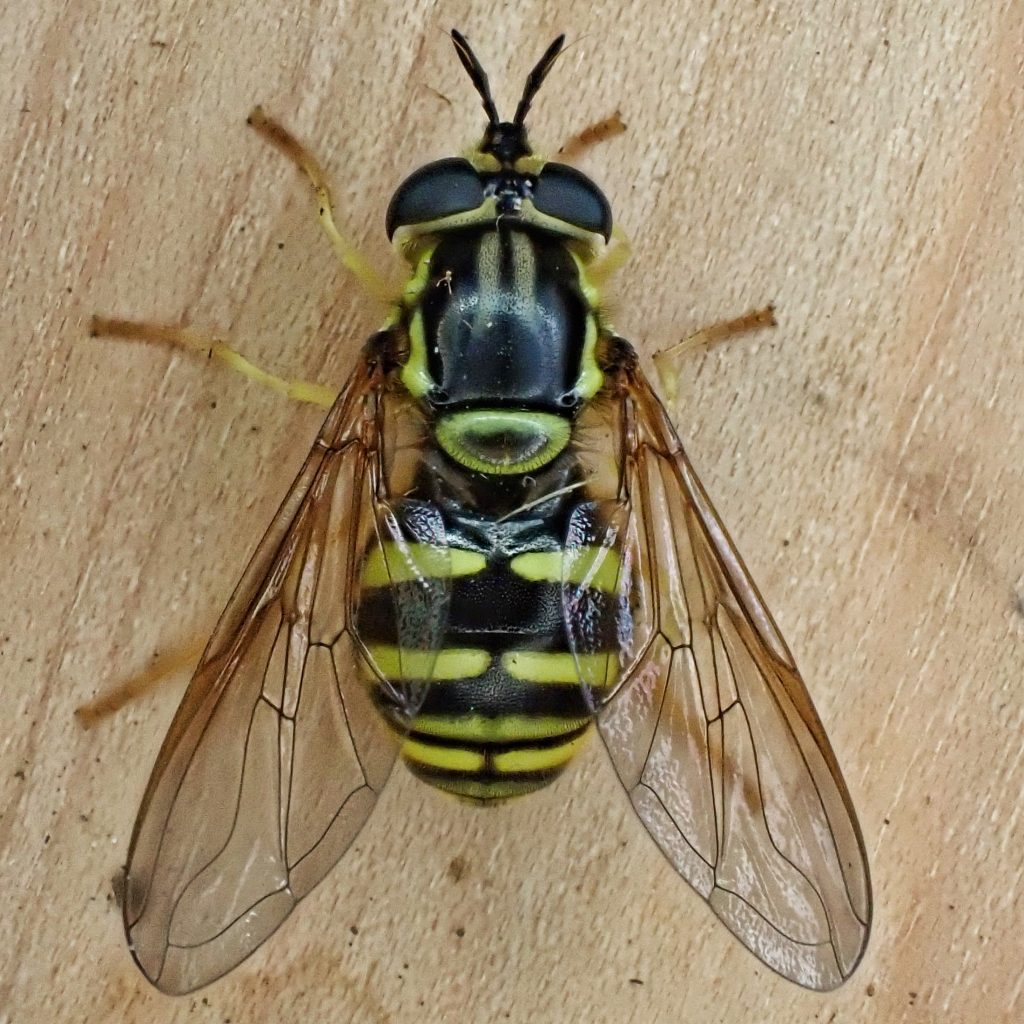
I am not positive that this Syrphid fly is Chrysotoxum flavifrons. The fact that the last segment of the antenna (flagella) is longer than the first two segments (scape and pedicel) combined, and that there are erect hairs on the front part of the side of the thorax (anepisterum), would definitely be diagnostic for this species if we were in the east. However I can’t find information on the species of the west, let alone their morphology, or a key to separate them.
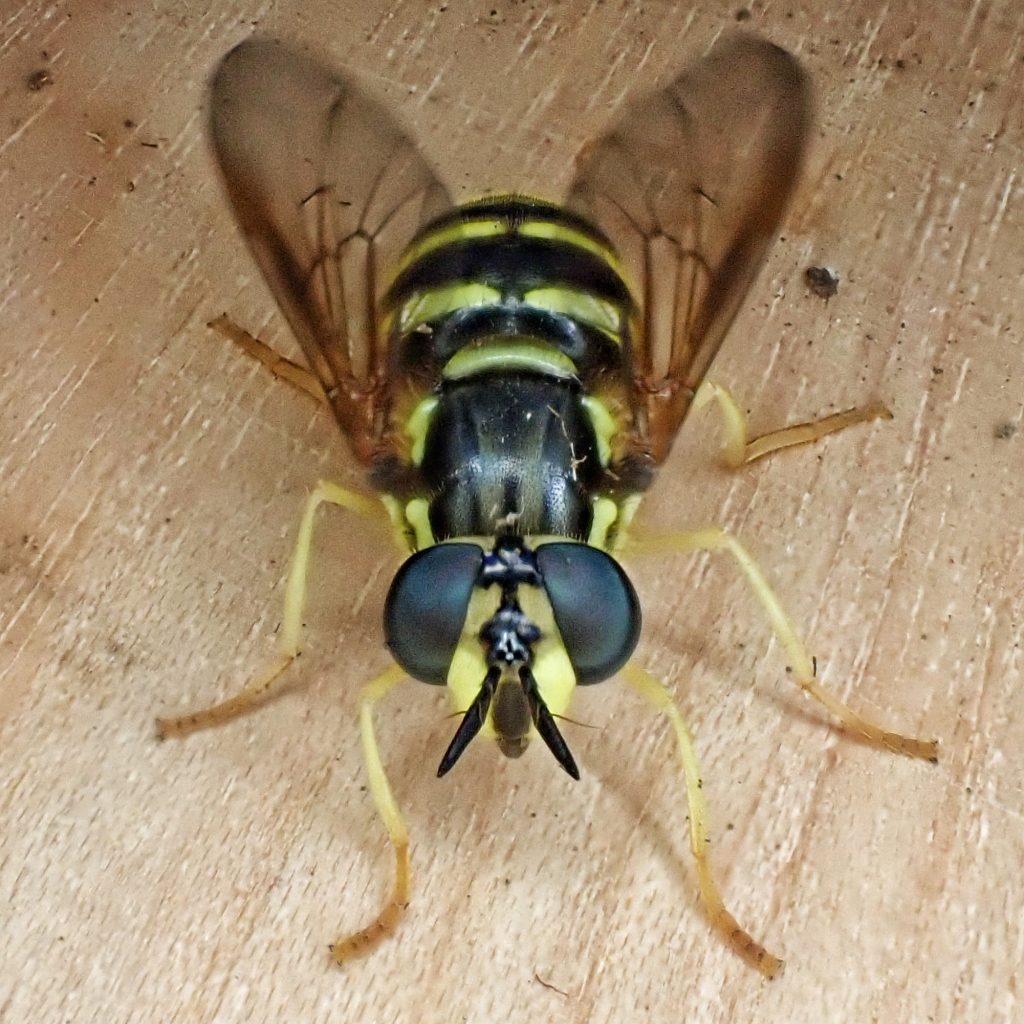
Chrysotoxum flavifrons is also common in our region, they apparently favor spruce forests like the one in which this one was found, and they feed on the flowers of Cornus sp., which were abundant in that area in the form of Cornus unalaschkensis, so that’s the label I’m sticking on it. If any of you have a better idea, please let me know. And, though I doubt that this is diagnostic it was interesting to me, I found this fly at a UV light at least 2 hours after dark.
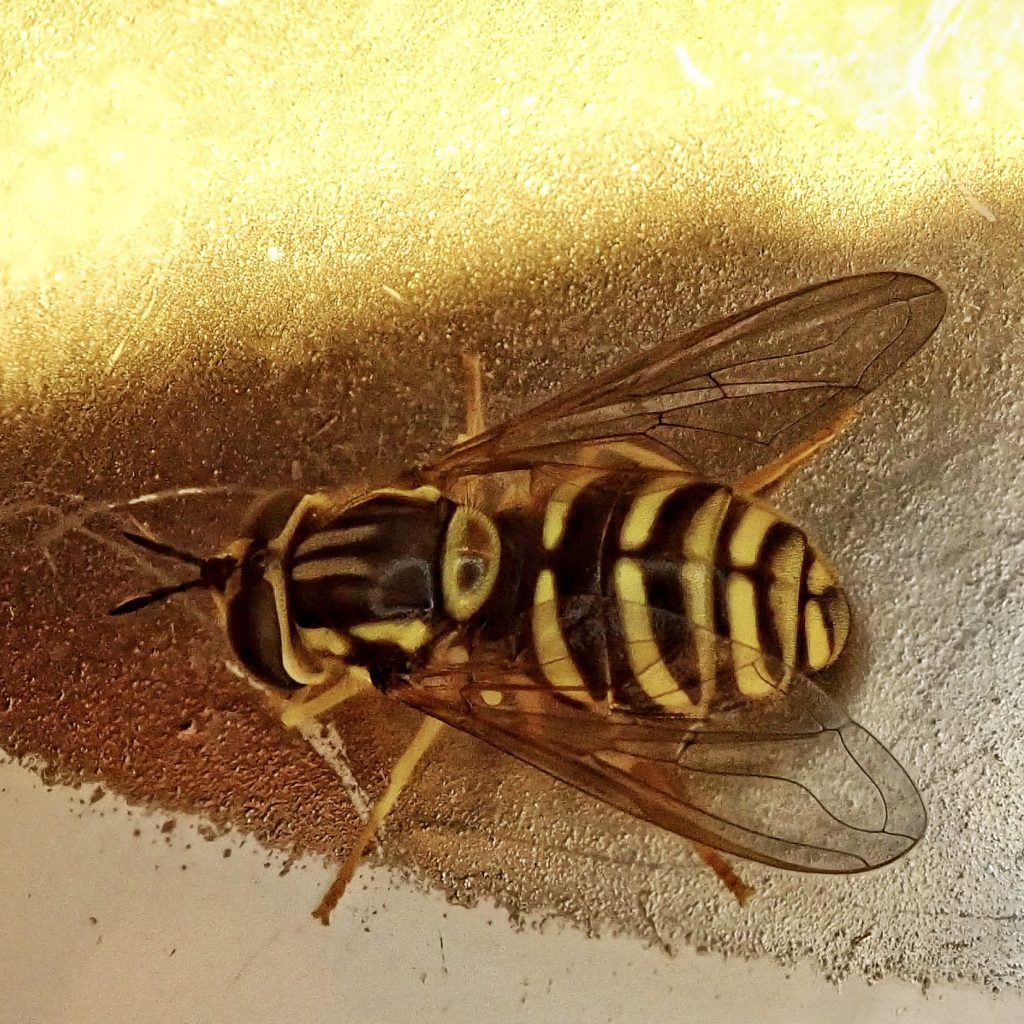
Description-Medium sized (11.2-16.5mm) wasp mimic Syrphid fly with yellow face, legs, abdominal lines, two yellow spots on the sides of the thorax, black scutum with 2 pale grey longitudinal lines, and a bronzy green scutellum; flagella of antenna longer than scape and pedicel combined; erect pile on the anterior anepisterum.
Similar species-I cannot ascertain even what all species we have in the west, let alone what might be similar.
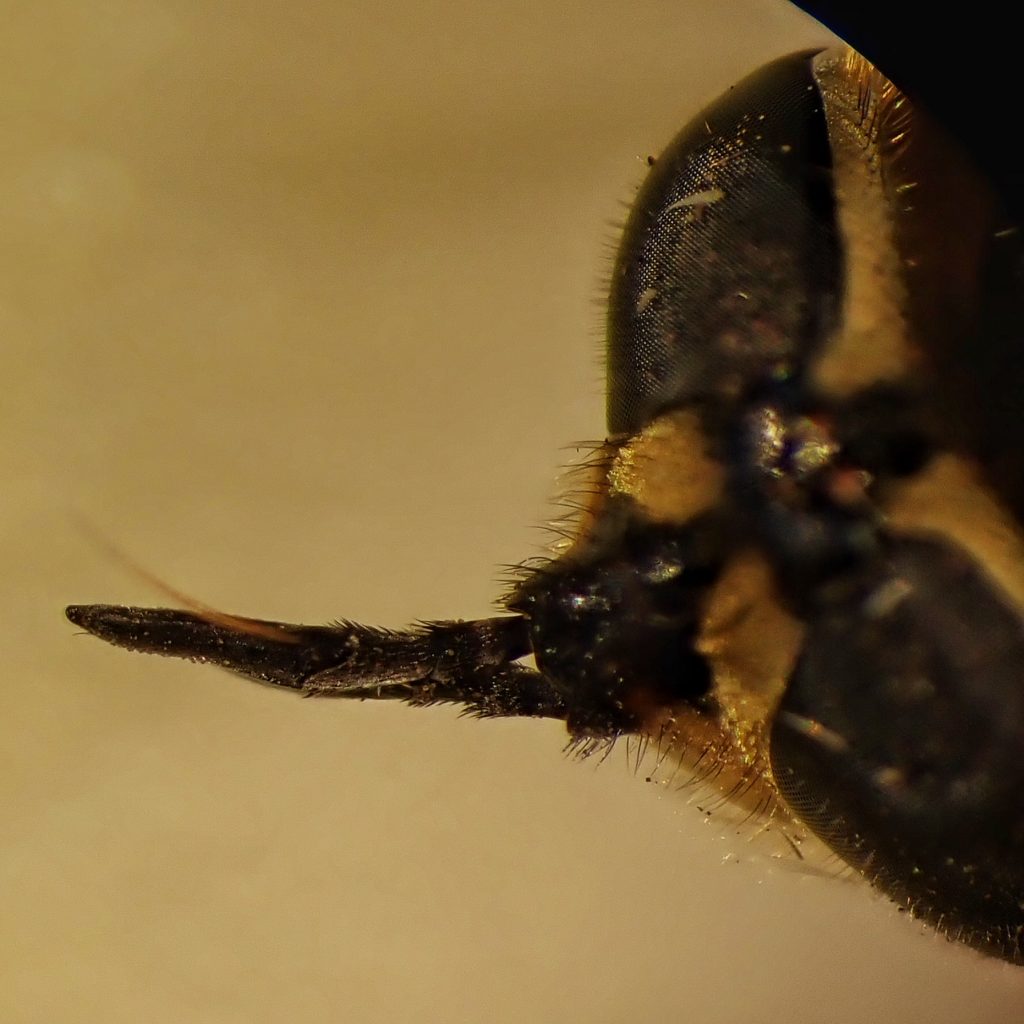
Habitat– Coniferous forests up to subalpine; known to frequent hilltops to find mates.
Range-Northern North America; probably region wide in appropriate habitat.
Eats-Larva are possibly associates of root aphids and ants, probably preying on the ant larvae and aphids, and scavenging honeydew; adults are known to visit the flowers of Cornus sp. (dogwoods) and Linnaea sp. (twinflowers), and probably many others.
Eaten by-Larvae are probably parasitized by some Encyrtid wasps; larvae and adults eaten by any insevtivore which can catch them, though the wasp mimicry probably protects many adults.
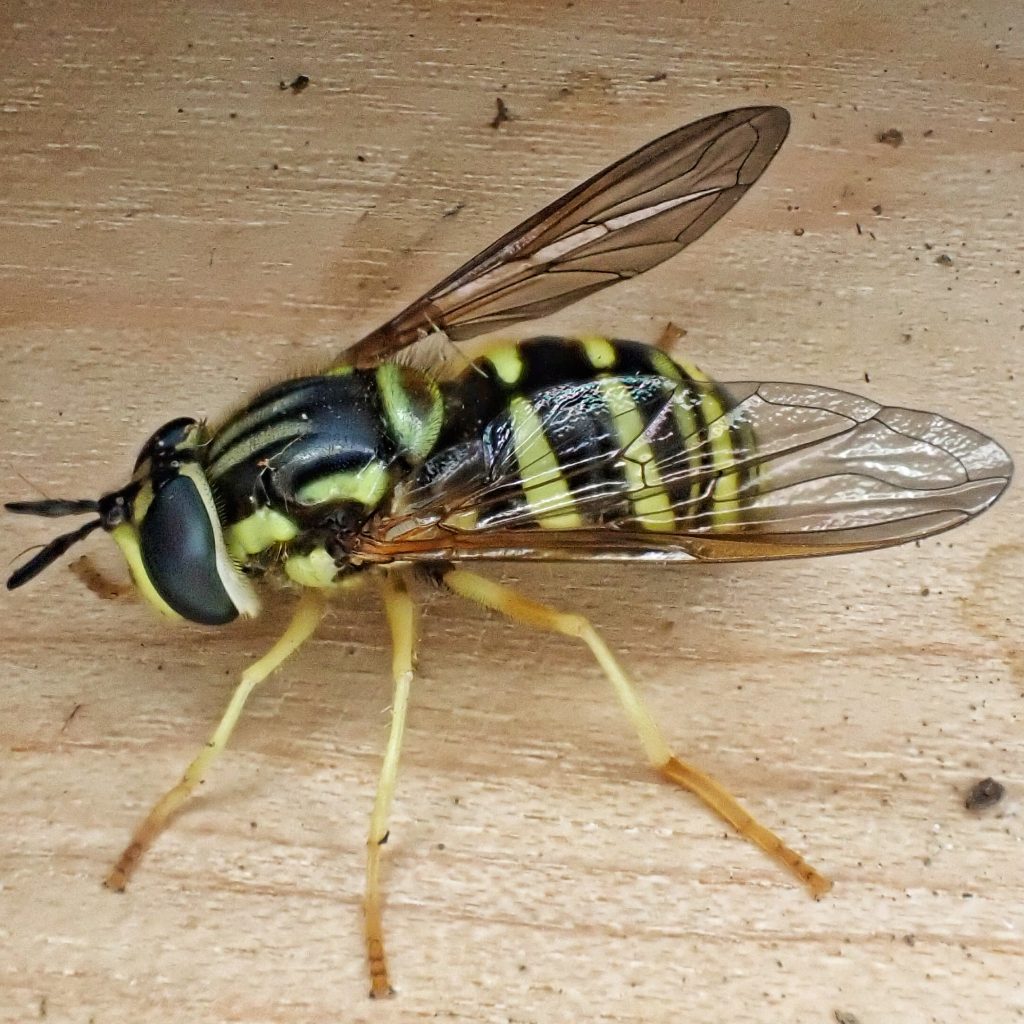
Reproduction-Nothing seems to be known for sure about the reproductive habits of anything in this genus, though female Chrysotoxum spp. have been observed ovipositing near ant nests.
Adults active-Late May to mid September
Etymology of names–Chrysotoxum is from the Greek words for ‘gold bow/cradle/curved support. I can’t seem to find out to which golden element in the morphology of Chrysotoxum this refers. The specific epithet flavifrons is from the Latin words for ‘yellow forehead’, although the face of this species isn’t any more yellow than several other Chrysotoxum.
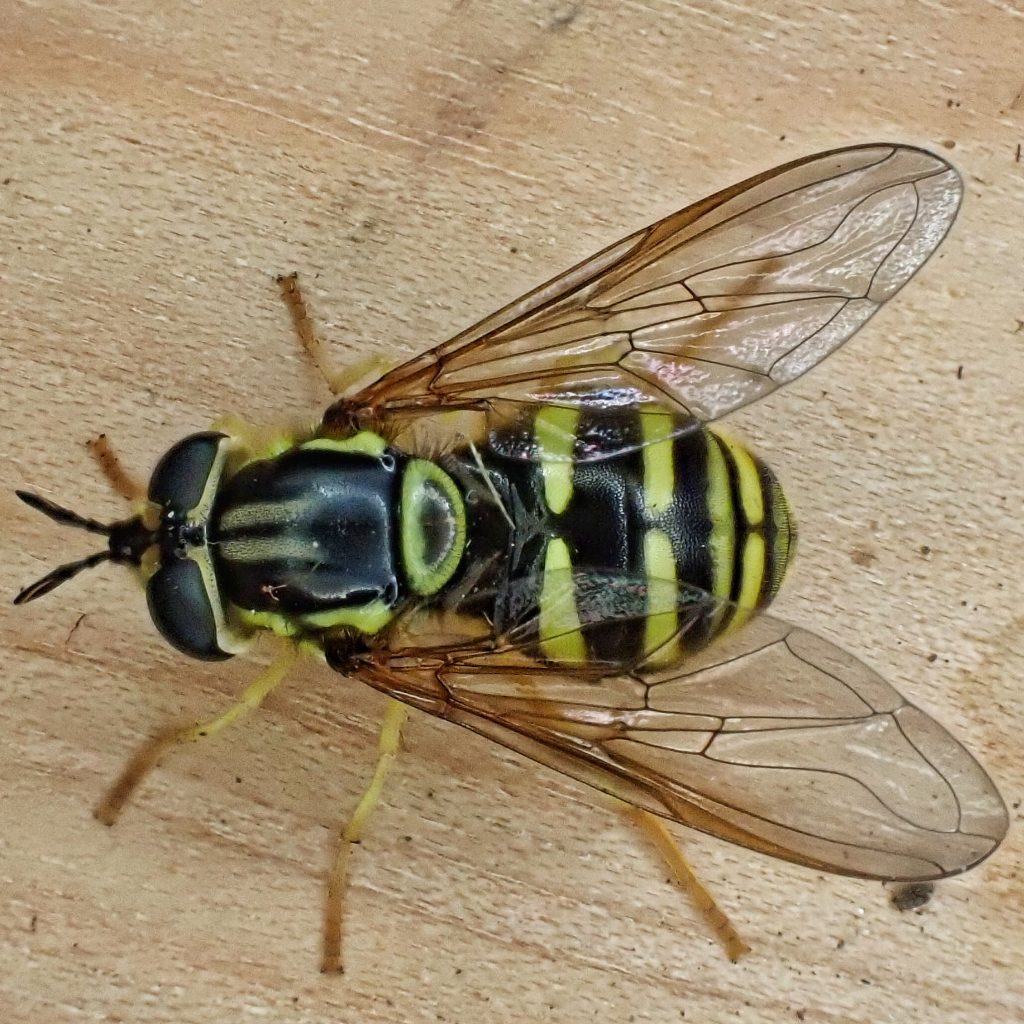
http://www.phorid.net/flower_fly/hover_species_pages/chrysotoxum_flavifrons.htm
https://bugguide.net/node/view/9155/bgimage
https://en.m.wikipedia.org/wiki/Chrysotoxum_flavifrons
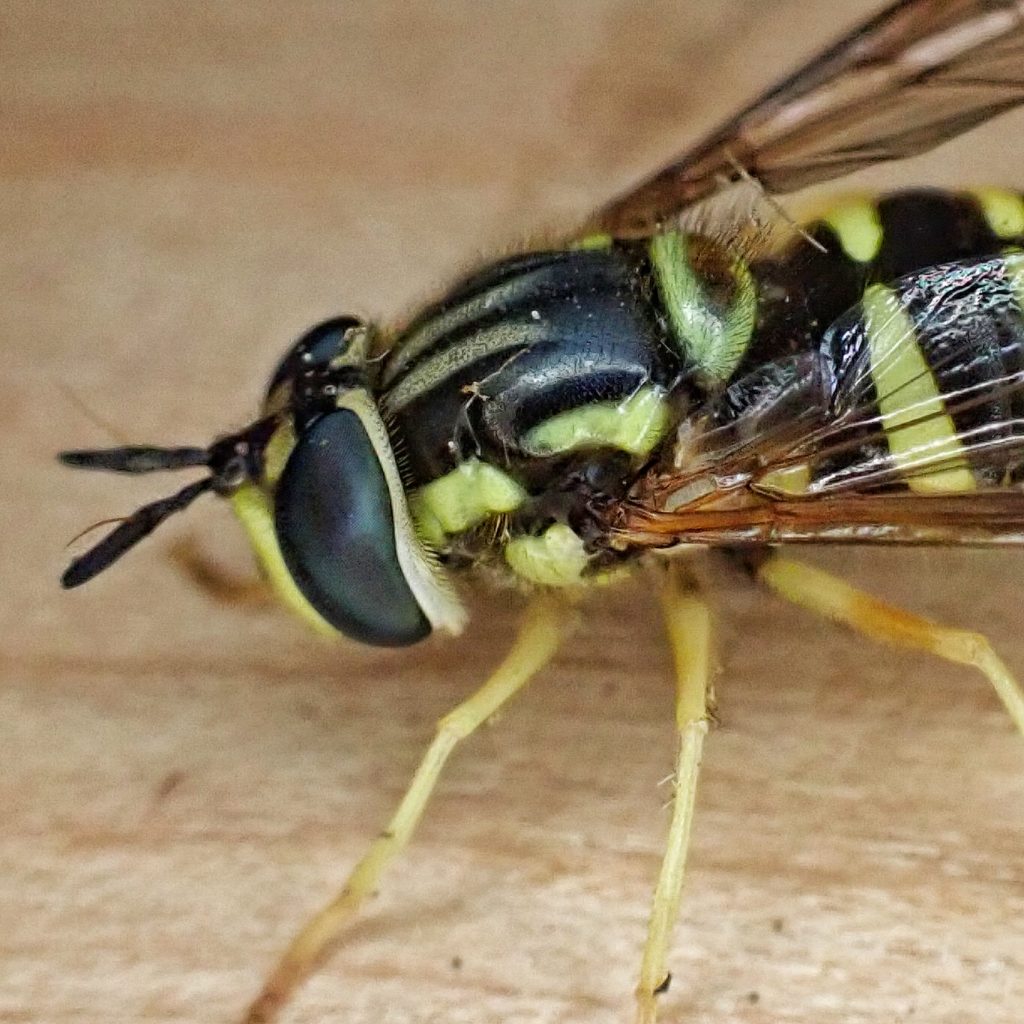
I am interested in insects that use NW native plants for food or reproduction. I am working with the Greater Sage-grouse for the Bend Audubon Chapter.
You have a remarkable number of insects that are associated with the plants that you profile. I am interested to know where you usually get the list of insects that are associated with a particular plant species or genus.
Thanks!
It’s a process, Stu! I have some books on Lepidoptera that talk about it, PDFs on leaf beetles and Pentatomidae that are arranged by host species, and an ebook by Charley Eiseman on leaf miners. It is disappointing how hard it is to find this information! Books on botany almost never list enemies. Oh, and anything that’s on the website Illinois Wildflowers usually has faunal associations, but that site doesn’t seem to have a search feature, so I have to hope it pops up in the google searches I do as part of the research. CABI often has plant enemies for invasive species. I am always looking for more information on what eats what, on both the flora and fauna side of the equation. If you ever find a database listing what eats a given plant that is ordered by the plant, please let me know!!!
I will do that!
Stu
You might want to look at this resource: https://www.nhm.ac.uk/our-science/data/hostplants/
HOSTS – a Database of the World’s Lepidopteran Hostplants – on the website of The Natural History Museum (London)
Thank you, Brent. I’ll check that out.